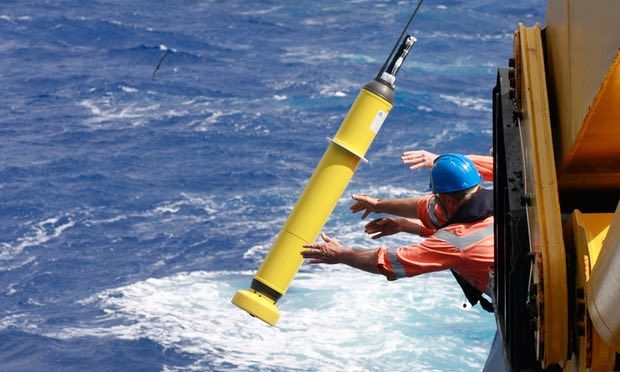Earth's Oceans Are Warming 13% Faster than Thought
Published on by Water Network Research, Official research team of The Water Network in Academic
New study improves estimates of the rate of ocean warming - a critical component of climate change.

An Argo float is deployed into the ocean Photograph: CSIRO
New research has convincingly quantified how much the Earth has warmed over the past 56 years. Human activities utilize fossil fuels for many beneficial purposes but have an undesirable side effect of adding carbon dioxide to the atmosphere at ever-increasing rates. That increase - of over 40%, with most since 1980 - traps heat in the Earth’s system, warming the entire planet.
But how fast is the Earth warming and how much will it warm in the future? Those are the critical questions we need to answer if we are going to make smart decisions on how to handle this issue.
At any time the direct effect of this blanket is small, but the accumulated effects are huge and have consequences for our weather and climate. Over 90% of the extra heat ends up in the ocean and hence perhaps the most important measurements of global warming are made in the oceans.
But measuring the ocean temperature is not straightforward. Since about 2005 a new type of sensing device has been deployed (the Argo float system). These floats (approximately 3500 in total at any time) are spread out across oceans where they autonomously rise and fall in the ocean waters, collecting temperature data to depths of 2000 meters.
When they rise to the ocean surface, they send their data wirelessly to satellites for later analysis. Hence we can now map the ocean heat content quite well. But what about the past, when we mainly had measurements from expendable bathythermographs deployed mainly along major shipping routes and largely confined to the northern hemisphere? Putting data from these various sensors together has been a struggle and has been a major impediment to an accurate quantification of the ocean’s temperature history.
Fortunately, a paper just published in Science Advances uses a new strategy to improve upon our understanding of ocean heating to estimate the total global warming from 1960 to 2015. I was fortunate to co-author the study, which uses several innovative steps to make improvements.
First, we corrected past data for known biases in measurements. Second, we related the temperature measurements to results calculated from advanced climate computer models. Third, we applied temperature knowledge to larger areas so that a single measurement was representative of a large space around the measurement site. Finally, we used their knowledge of recent and well-observed temperatures to show that the method produced excellent results.
We were able to extend our techniques back to the late1950s and show that the rate of global warming has changed significantly in the past 60 years. One main outcome of the study is that it shows we are warming about 13% faster than we previously thought. Not only that but the warming has accelerated. The warming rate from 1992 is almost twice as great as the warming rate from 1960. Moreover, it is only since about 1990 that the warming has penetrated to depths below about 700 meters.
Read more at: The Guardian
Media
Taxonomy
- Research
- Ecosystem Management
- Marine
- Climate Change
- Climate Change Adaptation
- Climate Change Resilience
- Oceanographic Survey
- Marine Technologies